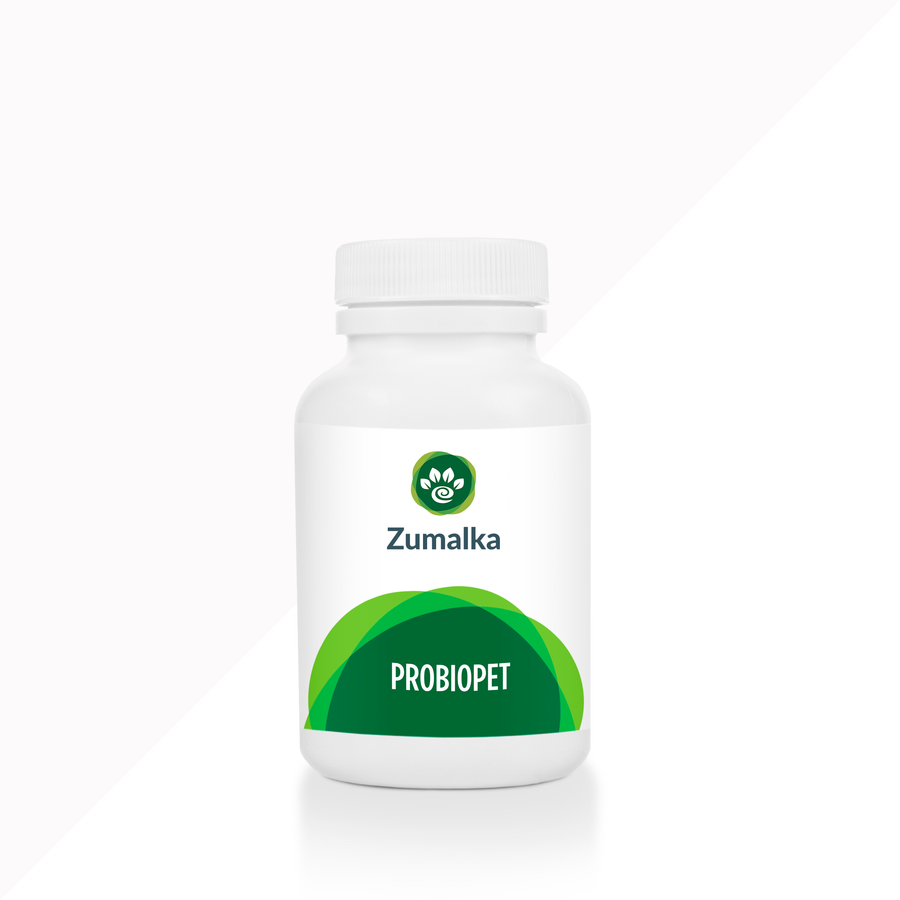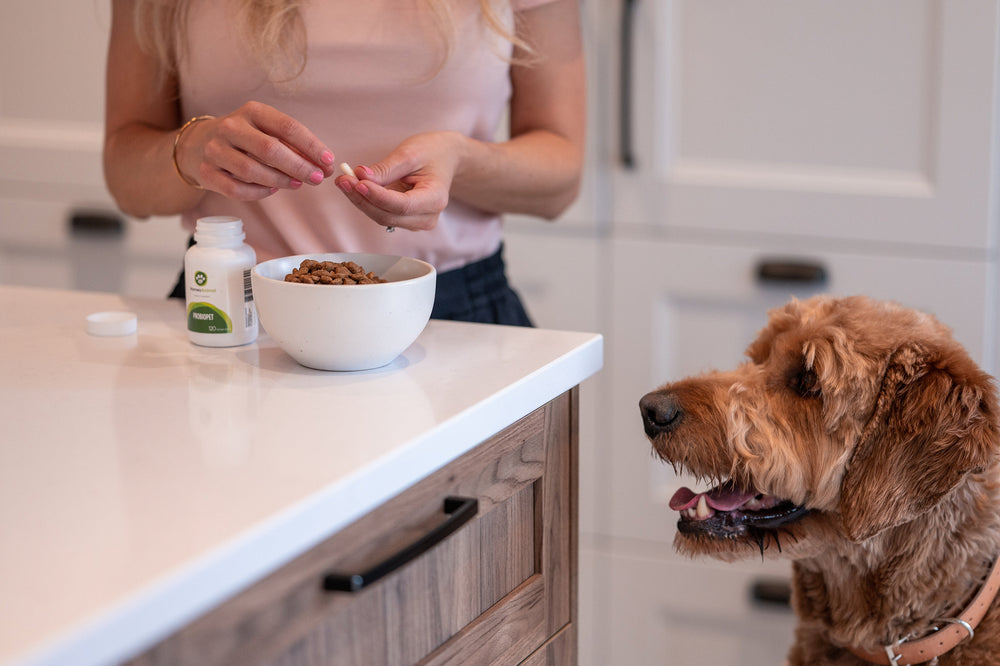Expert Insights: Raw vs. Cooked vs. Kibble – The Ultimate Dog Diet Showdown
Food is a universal love language, and for dogs, it’s one we speak on their behalf. With raw, cooked, and kibble options on the rise, choosing the best diet for your canine companion can be both confusing and crucial.
Pet parents often encounter conflicting opinions online about raw, fresh, and kibble dog diets. Misinformation and strong biases can make it hard to know which source to trust. As a result, choosing the right nutrition plan for your dog becomes a confusing and stressful decision.
Still unsure which dog diet is best?
In this guide, we compare raw, cooked (fresh), and kibble diets to help you understand their benefits and drawbacks. Using expert advice and scientific research, we break down what each option means for your dog’s health. Our goal is to empower you to make a confident, well-informed choice for your pet’s nutrition.
Before switching your dog’s diet, it’s essential to consult your veterinarian or a certified pet nutritionist. Every dog has unique health needs, and expert guidance helps prevent unintended issues. A personalized approach ensures your pet receives balanced, appropriate nutrition for optimal well-being.
What to Consider When Choosing a Raw, Cooked, or Kibble Diet for Your Dog
Your dog’s health starts with a complete and balanced diet. This includes premium-quality proteins, fats, carbohydrates, and essential nutrients like vitamins and minerals. No matter the diet, raw, cooked, or kibble, it must provide all the nutrition your dog needs to thrive.
No two dogs are exactly alike, and their diets shouldn't be either. Factors like age, breed, activity level, and health conditions all influence what nutrition is best. Choosing a diet that meets your dog’s individual needs is essential for their long-term health and happiness.
A balanced diet is the cornerstone of your dog’s overall health. Proper nutrition supports everything from immune function and digestion to energy levels and longevity. Make sure you take note of the following:
- Your dog’s age, size, and activity level all play a major role in determining their nutritional needs. Puppies, adults, seniors, and different breed sizes require tailored diets to support healthy growth, maintenance, and aging.
- Many dogs experience food allergies or intolerances to ingredients such as eggs, wheat, soy, corn, chicken, or dairy. Choosing a diet free from these common triggers can help support better digestion, skin health, and overall wellness.
- Even the most nutritious dog food won’t help if your dog refuses to eat it. Taste, texture, and smell all play a key role in ensuring your dog enjoys their meals and gets the nutrition they need.
- When choosing your dog’s diet, it’s important to consider what fits your lifestyle. Time, budget, and space all influence whether raw, cooked, or kibble feeding is practical for you and sustainable long-term.
Kibble: Pros, Cons, and Nutritional Value

Kibble is a dry dog food designed to provide complete and balanced nutrition. While ingredients vary by brand, all formulas must meet established nutritional guidelines to support your dog’s health.
It is made by processing and cooking a blend of proteins, grains, cereals, vitamins, minerals, and antioxidants. Preservatives are added to maintain freshness and prevent fat spoilage over time.
Pros:
- Kibble is typically the most budget-friendly dog food option, making it accessible for many pet owners. Its affordability allows for consistent feeding without compromising basic nutritional needs.
- Kibble is highly convenient, requiring no prep and offering a long shelf life with low risk of spoilage. Its easy storage and grab-and-serve simplicity make it ideal for busy pet owners.
- Kibble’s crunchy texture can help reduce plaque buildup and support better dental health in dogs. Regular chewing may also promote healthier gums and fresher breath.
Cons:
- Kibble is considered a processed food, which raises concerns for some pet owners seeking a more natural diet. High-heat processing can affect ingredient quality and nutrient retention, depending on the brand and formulation. This can destroy heat-sensitive nutrients, like key vitamins, amino acids, and enzymes, essential for digestion and overall pet health.
- Kibble contains low moisture levels, which can be problematic for dogs that don’t drink enough water. This lack of hydration support may contribute to digestive issues and long-term organ stress.
- Ingredient quality in kibble can vary widely between brands. Some formulas may rely heavily on carbohydrates, use low-grade fillers, or include added sugars that offer little nutritional value.
- Kibble may not appeal to all dogs, especially picky eaters. Its dry texture and lower aroma can make it less enticing compared to fresh or wet food options.
What to look for
When selecting kibble, check the label to ensure a named protein source is listed first, such as chicken, beef, or lamb. Avoid formulas where grains or fillers take priority over quality animal protein.
The best kibble formulas often use a single, named protein source, such as lamb or chicken. This can support better digestion and make it easier to identify potential food sensitivities.
Look for kibble brands developed by veterinary nutritionists and backed by thorough testing. Expert formulation and quality control help ensure the food is safe, effective, and nutritionally balanced for your dog.
Choose dog food brands that meet or exceed AAFCO and WSAVA guidelines for balanced, science-based nutrition. These standards help ensure your dog receives safe, high-quality food backed by expert recommendations.
Raw Dog Food Diets: Benefits, Risks, and What to Know

The raw dog food diet, also known as BARF (Biologically Appropriate Raw Food or Bones and Raw Food), focuses on feeding fresh, uncooked ingredients. It aims to mirror a dog’s natural, ancestral diet by including raw meat, bones, organs, and vegetables.
Raw dog food often consists of uncooked muscle meat, organ meats, and whole or ground bones. Many recipes also include raw eggs, dog-safe fruits and vegetables, and small amounts of dairy for nutritional variety.
Pros:
- Supporters of raw dog food diets often report benefits like shinier coats and healthier skin. Improved dental health is another commonly claimed advantage, attributed to chewing raw meat and bones.
- Proponents of raw diets often note increased energy levels and smaller, firmer stools in their dogs. They also believe this approach more closely mimics a dog’s ancestral diet and preserves natural enzymes lost during cooking.
- Raw diets naturally contain higher moisture content, making them ideal for dogs with low water intake. This added hydration supports better digestion, kidney function, and overall health.
- Raw diets are often highly palatable, making them appealing to even the pickiest eaters. The fresh ingredients and natural aromas can enhance appetite and mealtime enjoyment for many dogs.
Cons:
- Raw dog food can expose pets and people to harmful bacteria such as Salmonella, E. coli, and Listeria. This risk is especially serious for children, seniors, and individuals with compromised immune systems.
- Improperly formulated raw diets, especially homemade ones, can result in serious nutritional imbalances, such as incorrect calcium-to-phosphorus ratios or vitamin deficiencies. Unlike wild animals, domestic dogs have unique nutritional needs that must be carefully met to support long-term health.
- Feeding raw bones can pose serious health risks, including broken teeth, choking hazards, and intestinal blockages or perforations. While some advocate for raw bones in a natural diet, the potential for injury makes caution essential.
- Some commercial raw dog foods may include meat not certified by the USDA for human consumption, raising concerns about quality and safety. These products can contain rejected animal parts or meat from medicated livestock, which may pose health risks.
- Raw diets are not appropriate for all dogs, particularly puppies with immature immune systems, senior dogs, or those with conditions like pancreatitis or cancer. These pets often need carefully managed, veterinarian-approved diets tailored to their specific health needs.
Gently Cooked Fresh Dog Food: A Minimally Processed Alternative

Fresh dog food is crafted from natural, human-grade ingredients like beef, chicken, lamb, peas, carrots, spinach, and blueberries. It’s gently cooked to preserve nutrients while offering a wholesome, minimally processed alternative to traditional dog food.
Moreover, fresh dog food is gently cooked or minimally processed using methods like sous vide, air-drying, or freeze-drying to retain nutrients. These recipes avoid fillers, by-products, artificial flavors, and preservatives, focusing on clean, high-quality ingredients.
Fresh dog food usually needs to be refrigerated or frozen to stay fresh and safe. It’s commonly delivered in pre-portioned servings, offering convenience and precise meal control.
Pros:
- Fresh dog food is often linked to improved overall well-being, including better heart health, increased energy, and shinier coats. Pet owners also report benefits like fresher breath, improved digestion, healthier stools, and enhanced vision.
- Research shows that fresh, whole food diets are easier for dogs to digest than kibble. Gentle cooking methods help preserve nutrients and create a softer texture, making these meals ideal for senior dogs or pets with dental challenges.
- Trusted fresh dog food brands work with veterinary nutritionists to create recipes that are complete, balanced, and tailored to dogs’ specific needs. Many of these formulations meet or exceed AAFCO standards and WSAVA guidelines for optimal canine nutrition.
- Gently cooked dog food offers many of the same benefits as raw diets but with a significantly lower risk of foodborne illness. The cooking process helps eliminate harmful bacteria and parasites while preserving essential nutrients.
Cons:
- Preparing fresh dog food at home can be time-consuming, costly, and require adequate kitchen space and storage. While homemade meals offer control over ingredients, they often demand a significant commitment of effort and resources.
- Fresh dog food is usually more costly than kibble, largely due to its high-quality, human-grade ingredients and careful preparation. Still, many owners view the added expense as a worthwhile trade-off for improved nutrition and overall wellness.
What to look for
Choose fresh dog food brands that work with board-certified veterinary nutritionists to formulate their recipes. Expert-designed meals help ensure your dog receives complete, balanced nutrition tailored to their specific needs.
Opt for fresh dog food made with human-grade ingredients sourced from trusted farms and suppliers. Veterinarian-approved sourcing ensures higher quality, safety, and nutritional value for your pet.
Always check that the dog food meets AAFCO and WSAVA nutritional guidelines. Compliance with these trusted industry standards helps ensure your pet receives safe, complete, and balanced nutrition.
Which Dog Diet Is Best? Final Thoughts and Expert Guidance
Every dog is unique, so there’s no one-size-fits-all diet. The best choice depends on your dog’s individual health status, lifestyle, and life stage. Consulting a veterinarian or certified pet nutritionist can help ensure you're meeting your dog’s specific nutritional needs.
No matter which type of diet you choose, it must offer complete and balanced nutrition tailored to your dog’s age, size, and health status. Meeting these nutritional requirements is essential for long-term health and vitality.
Proper Nutrition and Overall Immunity Go Together
No matter what you feed your dog, neglecting their immune health can lead to serious problems over time. That’s why choosing a premium, natural supplement to support immunity is a smart, proactive step.
Zumalka’s IMMUNOPET is a natural immune support supplement for dogs, formulated to strengthen the body’s defenses and promote faster recovery. IMMUNOPET’s blend of potent, plant-based ingredients helps increase hemoglobin levels, support lymphatic function, and boost white blood cell production, key to fighting bacterial and viral infections.
Smart Tips for a Safe and Healthy Diet Transition
To prevent digestive issues, any change to your dog’s diet should be made gradually over about a week. Start by slowly blending the new food with the old, increasing the ratio each day.
As you transition your dog to a new diet, keep an eye out for symptoms of food-related issues. Signs like vomiting, diarrhea, lethargy, itchy skin, or recurring ear infections may indicate food poisoning or an allergic reaction.
Puppies require elevated levels of protein, fat, and a properly balanced calcium-to-phosphorus ratio to support rapid growth and development. Because their immune systems are still developing, raw diets are generally not recommended due to the risk of harmful bacteria.
Older dogs may benefit from senior-specific diets that offer reduced calories, increased fiber, and high-quality, digestible protein. Raw diets are generally not recommended, as aging immune systems are more vulnerable to bacterial contamination.
A Final Word
Selecting the right diet plays a vital role in your dog’s energy, coat health, digestion, and overall well-being. With guidance from your veterinarian, you can make informed, confident choices that support your dog’s health at every life stage.
The most effective way to choose the right diet is by partnering with your veterinarian or a qualified pet nutritionist. They can provide expert, personalized recommendations based on your dog’s unique health needs, age, activity level, and preferences.
Focusing on high-quality, balanced nutrition, with support from experts, gives your dog the best chance to thrive. To protect against unexpected costs, consider pet insurance that covers diet-related health concerns and veterinary care.
FAQs
What is better, raw or cooked food for dogs?
Both raw and cooked dog food have advantages. Cooked diets offer safety and digestibility, while raw diets emphasize natural ingredients. The right choice depends on your dog’s health, lifestyle, and guidance from a professional.
What's better for dogs, raw food or kibble?
Raw food provides fresh, natural ingredients, while kibble offers convenience, cost-effectiveness, and a long shelf life. The right choice depends on your dog’s health, lifestyle, and needs. Always consult your veterinarian or pet nutritionist for expert guidance.
What is the healthiest food to feed your dog?
The healthiest food for your dog is a complete, balanced diet tailored to their age, size, and health needs. Whether raw, cooked, or kibble, choose vet or pet nutritionist-approved options that meet AAFCO nutritional standards.
Is kibble or fresh food better for your dog?
Fresh food offers higher-quality ingredients and digestibility, while kibble provides convenience and affordability. The better option depends on your dog’s health, lifestyle, and needs. Consult your veterinarian or pet nutritionist for the most appropriate choice.
Can I mix raw and cooked food for my dog?
You can mix raw and cooked food for your dog, but it must be done carefully to avoid digestive issues or imbalanced nutrition. Always consult your veterinarian or a certified pet nutritionist before combining diets.
Can dogs eat cooked meat every day?
Dogs can eat cooked meat daily if it’s plain, properly cooked, and part of a complete, balanced diet. Always consult your veterinarian or pet nutritionist to ensure all nutritional needs are met.
Is it healthier to feed your dog raw food?
Raw food may provide fresh, natural ingredients and mirror ancestral diets, but it also poses risks like bacterial contamination and nutrient imbalance. Its health benefits vary by dog, so consult your vet or pet nutritionist for guidance.
Is it better to feed dogs raw or cooked organs?
Both raw and cooked organs can be nutritious for dogs, but cooking reduces the risk of pathogens. Always source organs carefully and consult your veterinarian or pet nutritionist to ensure safe, balanced feeding.








Dear Susie,
Thanks for your query about pet food. We have reached out to you via email with an answer. Hoping to hear from you soon !
having problems finding the right cat food for my cats. Please help on choosing dry and wet
Thank you for your question about your pet’s diet. We are not trained animal nutritionists ourselves.
But we have worked with many animal nutritionists to create the Nutrition Guide, they will gladly assist you with any pet nutrition queries you may have. Please consult our guide here: https://www.zumalka.com/blogs/blog-pet-health/the-ultimate-pet-nutrition-guide-finding-the-best-food-for-your-pet
I want to find or make healthy food for my cats, but I feel like it’s almost impossible. Plus, they are all old, 14 years, so they are finicky also which makes it worse. I really need help with this and I haven’t known who to ask. I would love to talk to an animal nutritionist or anyone who can help.
Leave a comment